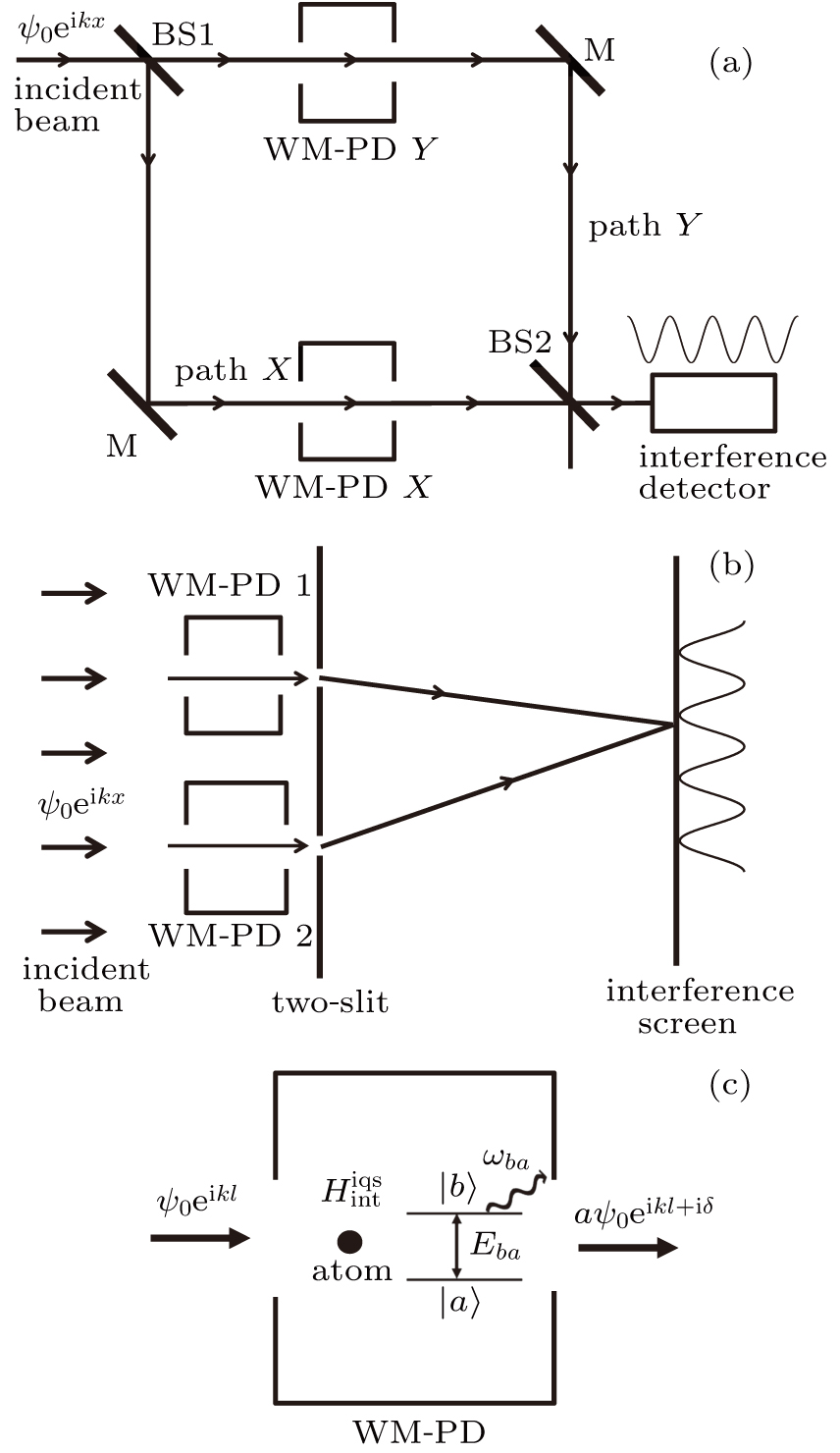Atom interferometers with weak-measurement path detectors and their quantum mechanical analysis
Schematic illustration of weak-measurement atom interferometer used to test the WPD for Rydberg atoms with two high-orbital electronic states in (a) the MZI scheme and (b) YI scheme. (c) Illustration of WM-PD made from two high-Q micromaser cavities involving microwave photon interacting with the internal electronic quantum states. The WM-PD can unanimously probe the passage of an atom via sensing the spontaneously emitting microwave photon originated from down transition of bound electron from the excited state to the ground state. Because the indirect interaction of which-path recording has an energy scale much smaller than the atom center-of-mass momentum energy, the perturbation to the atom wave function and the random phase shift is negligible, so that the action of WM-PD still maintains a nearly perfect interference fringe pattern in the output observation screen. Thus, this WM-AI offers a superior power to simultaneously observe the wave and particle nature of the atom.
